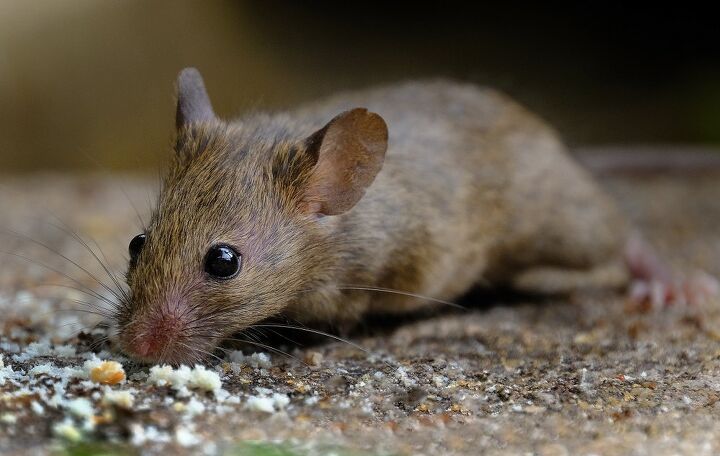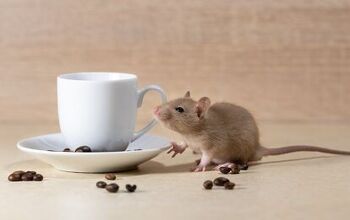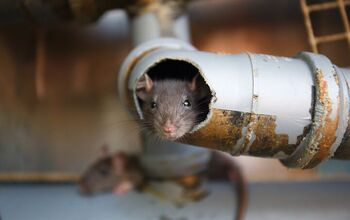What Attracts Mice? (Find Out Now!)

Mice are household pests that are difficult to get rid of once they make your house their home. Although not as harmful as the most harmful of household pests, the mosquito, mice come with their own hazards. Lots of things attract mice, and these critters have a way of ingratiating themselves into your place of residence.
Food’s sight and the smell attract mice, whether cooked, trashed, or left on a kitchen counter. Another common household item that mice find particularly appealing are paper products such as magazines and old newspapers. Aside from their culinary pursuits, mice are always on the lookout for quiet nesting places, like your attic or basement.
Aside from comestibles, there are other non-food attractants in your home that mice find particularly appealing. Discover what these are and learn how to deal with unwanted rodent guests before they decide to stay for good.
Do You Need Pest Control Services?
Get free, zero-commitment quotes from pro contractors near you.

9 Household Items That Attract Mice
Dry Goods Attract Mice
Food is the number one item that brings unwanted pests to your table, whether mice, raccoons, or even bears. It doesn’t matter the type of food, just the smell of it will draw any hungry animal seeking sustenance. Tiny mice have an easier go of it than an 800-lb bear roaming acres of forest you call a backyard.
Cereal is particularly appealing since a mouse can run up, grab a piece, and scoot right back down. Similarly, oats and wheat are other favorites as they are stored mostly in boxes. Any mouse can quietly and successfully eat their way in from the bottom of the cardboard box.
The best way to store dry goods is to repackage them in airtight plastic or glass containers. Any old jar with a lid will work such as pickle jars or empty, giant mayonnaise tubs. Simply wash thoroughly, dry completely, and fill with your favorite cereal or old-fashioned oats.
Meats and Sweets Attract Mice
If you’ve ever seen the Disney flick “Ratatouille”, then you know that rodents have excellent taste too. Mice love high-protein, high-sugar, and high-fat human food such as bacon, butter, and chocolate. These cunning creatures have evolved to where they know the types and smells of foods that sustain them the most.
Upon arriving home after doing the grocery shopping, put your goodies away as soon as you walk in the door. Meats and dairy go in the fridge or freezer and move dry goods from cartons to plastic or glass containers. If you must have sweet stuff on the counter, store it in a glass dish, preferably one with a nice, heavy lid.
Crumbs And Oven Grease Attract Mice
Mice don’t need to go after a big hunk of meat when crumbs abound on your kitchen counters and floors. Even with proper food storage, mice will still invade your kitchen if you don’t clean up after preparing a meal. Left unchecked, rodents may not be your only problem as roaches are also drawn to an unclean kitchen.
Immediately clean up after cooking a meal and do not leave dirty dishes in the sink. Sweep or vacuum the kitchen floor and take out the trash daily, as much as possible. Do not forget to wipe down your stove and counters, as these are prime spots for leftover crumbs and grease.
Books, Newspapers, And Magazines Attract Mice
Paper products are common household items mice would love to claim for themselves. Not because they have stellar reading habits, but rather because paper is an excellent material for nesting. Mice are after two things when they decide to invade your home, and these are sustenance and shelter.
One way to avoid this problem is to clear out your home of unnecessary and dated newspapers and magazines. Aside from being a fire hazard, these items are also prime rodent real estate. Better yet, take these items to a paper recycling plant and do your part for the environment.
Books can be kept in closed bins or occasionally sprayed with rodent repellent if displayed on shelves. Many magazines and newspapers are easily accessible on the internet these days with an online subscription. At the click of a button, you can help save trees and avoid a rodent infestation at the same time.
Clothes And Linens Attract Mice
Cloth is yet another material mice love to reappropriate for themselves. They probably won’t go after that new outfit you just got from the store yesterday. Instead, they seek out fabric that has been left untouched and forgotten in attics, closets, and boxes.
Purge your closets of items you wish to keep or donate to avoid overcrowding and possible mice activity. Inspect and wash unused linens, towels, and bedding, and keep only what you use. Again, those lidded plastic bins come in handy and are ideal for storing fabrics before placing them back in the closet.
Pet Food Attracts Mice
Be it dog, cat, gerbil, or parrot feed, a mouse will burrow its way in the bag and help itself. Pet food is yet another source of sustenance for any wandering and hungry mouse. A mouse will consider an open bag of dog food as an open invitation to feast its tiny heart out.
Holes, Cracks, And Crevices
Remember Tom & Jerry? Tom could never get at Jerry because Jerry had his own hole-in-a-wall to escape after being pursued by Tom. You may have your own Jerry and company living with you if you don’t fix those holes, cracks, and crevices.
Look for holes or cracks in the house by dimming or darkening a room when possible. Check for areas where the light shines through, from the ceiling down to the floor. If you see a hole, repair big ones with sheet metal and plug up small ones with metal wire mesh.
Mice hate the feel of metal and cannot gnaw through them. Once done with the repair with metal, fill in any visible gaps with caulk or expandable foam. Also, check window sills and under doors to ensure no gaps for tiny mice to go through.
Trash And Litter
Junk, debris, garbage, trash, treasure, whatever you call it, it’s gotta go. Mice see and smell clutter as instant shelter, sustenance too if there’s a used pizza box in there somewhere. If you don’t want a rodent problem, cleanliness is key.
Throw away debris before it accumulates in any and all areas of the home. Try to make it a habit of throwing out kitchen trash daily instead of letting it fester for a week. Eliminating all sorts of food scraps and packaging is crucial in keeping a rodent-free home.
Bushes And Trees
Mice are not only talented contortionists; they are also excellent climbers and jumpers. They will utilize these skills to get into your home via overhanging tree limbs, bushes, and vines. Trim all outside foliage and ensure a two-foot perimeter clearance from your house to prevent rodents from entering the home.
Unwanted Effects of Mice Infestation
Mice infestation brings nothing but damage to both home and belongings. Aside from eating your food and making a nest in your clothes, mice defecate and urinate to claim their territory. This mice waste is full of pathogens that are harmful to the human body.
Salmonella
Mice are known to eat just about anything they can get their tiny teeth on. This foray into any place that harbors food sources means mice track all sorts of bacteria all over your kitchen. One such type of bacteria is salmonella, which causes food poisoning.
Salmonella exposure symptoms include severe stomach cramps, vomiting, fever, chills, and an assortment of aches and pains. A severe case of salmonella would land you in the hospital and can be life-threatening if not treated immediately.
Hantavirus
Found in rodent waste, hantavirus gets transferred to humans if you come in contact with them. Mouse feces and urine can dry up and turn to dust which enters the human system through simply breathing. As with salmonella, hantavirus symptoms include chills and fever, aches, and pains.
If not treated immediately, hantavirus can cause breathing difficulties and kidney failure, which can be fatal.
Lymphocytic Choriomeningitis
By far the most dangerous of the diseases, LCMV is a rodent-borne virus causing neurological problems like meningitis and encephalitis. Primarily carried by the house mouse, LCMV is caused by contact with fresh urine, saliva, or rodent droppings. Research has shown that hamsters that come in contact with wild mice can also carry the disease.
Fire Hazards
Mice will steal your food, but if food is absent, they will settle for your home wiring system instead. Their chompers grow constantly and need filing, hence, the non-stop chewing on anything they can get their teeth on. They will chew on the wood on your walls and inadvertently chew the wiring from within.
Once the wiring is exposed, these become a fire hazard and may cause a short within your walls.
Do You Need Pest Control Services?
Get free, zero-commitment quotes from pro contractors near you.

Related Questions
Can I keep a mouse as a pet?
Many individuals keep mice as pets, and there’s no reason why you can’t have one if you are so inclined. Mice are generally very intelligent creatures and can be quite clean, given their own environment to thrive in. They will need vet visits to keep them healthy and ensure that they carry no viral diseases.
What is the best way to trap a mouse?
Mice are primarily nut and seed eaters, but if neither is available, peanut butter will do the job well. Dab some peanut butter in the mousetrap and wait until dark when no one is around. More often than not, you will have your elusive mouse trapped in the cage when dawn breaks.

Stacy Randall is a wife, mother, and freelance writer from NOLA that has always had a love for DIY projects, home organization, and making spaces beautiful. Together with her husband, she has been spending the last several years lovingly renovating her grandparent's former home, making it their own and learning a lot about life along the way.
More by Stacy Randall



























